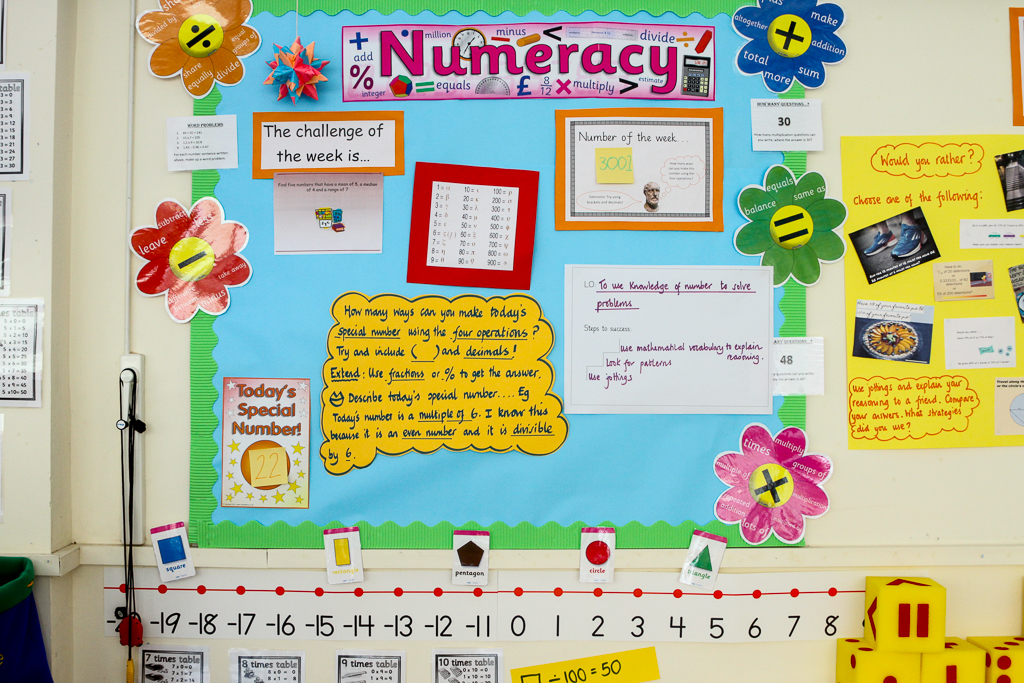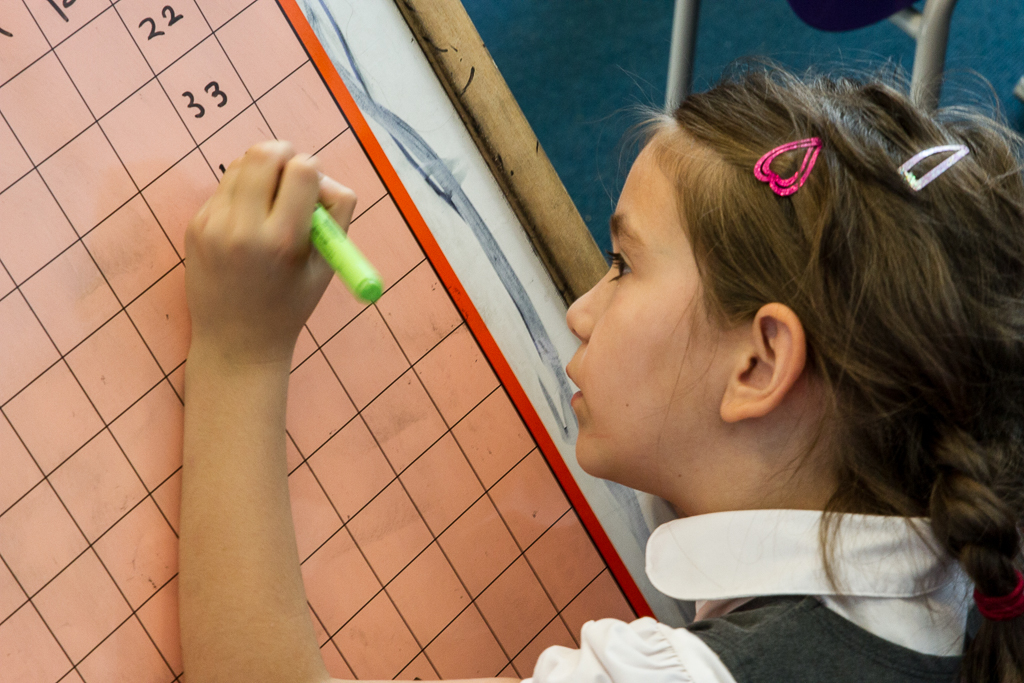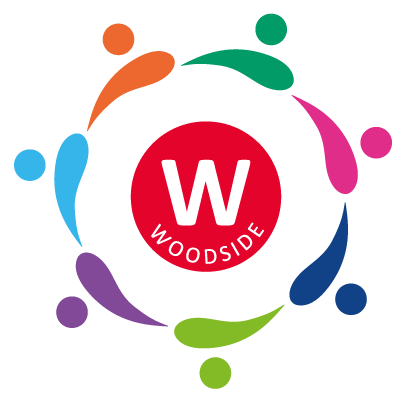Numeracy offer
Woodside Primary Academy places a high emphasis on Numeracy. We see Numeracy as a vehicle to ensuring successful children and adults. Each classroom has a maths zone, which provides pupils with opportunities to use learned skills in context by solving mathematical problems and puzzles independently. This helps deepen pupils’ understanding of mathematical skills and concepts while providing a good level of challenges and helping them practise their problem solving skills. We display pupils’ work to celebrate their achievements in our Numeracy zones. Examples of pupil’s work on display will also serve as models for others to look at for support.
Each classroom has been equipped with a rich variety of resources from which pupils can choose. These resources are motivating and allow children to explore mathematical structures in a physical way and explain their reasoning. Within this new approach, pupils are encouraged to represent mathematical structures with concrete resources first, before moving onto pictorial representation and finally abstract methods, i.e. written numbers and symbols. We use this process to ensure the fundamentals of maths are mastered and applied.

Numeracy should be fun and relevant for all pupils, and prepare them for the outside world. Staff are fully aware of how to plan and deliver fun, engaging and challenging lessons. We update staff knowledge and skills throughout the year as new techniques are presented to us. We also plan work around national initiatives, for example a ‘Number Day’ in December to coincide with the biggest maths fundraising event of the year! This will allow us to approach maths from a more creative angle and help both children and their parents to become involved.
The new curriculum is placing a lot of focus on embedding 'Using and Applying' opportunities in everyday maths lessons. We have revised and improved our calculation policy to ensure this happens. Over the year, parents will be invited to workshops where we will explain the policy as well as suggest fun and interactive ways in which they can support their children with practicing numeracy at home.
Times tables knowledge has always been important but has been identified as a key area in the new curriculum. Pupils are now expected to know all their times table facts up to 12x12 by the end of Year 4, which means pupils have to learn these much sooner than they had to previously. This will have an impact on when we teach times tables and also the content of weekly homework which will be provided to support your child in achieving these milestones.


